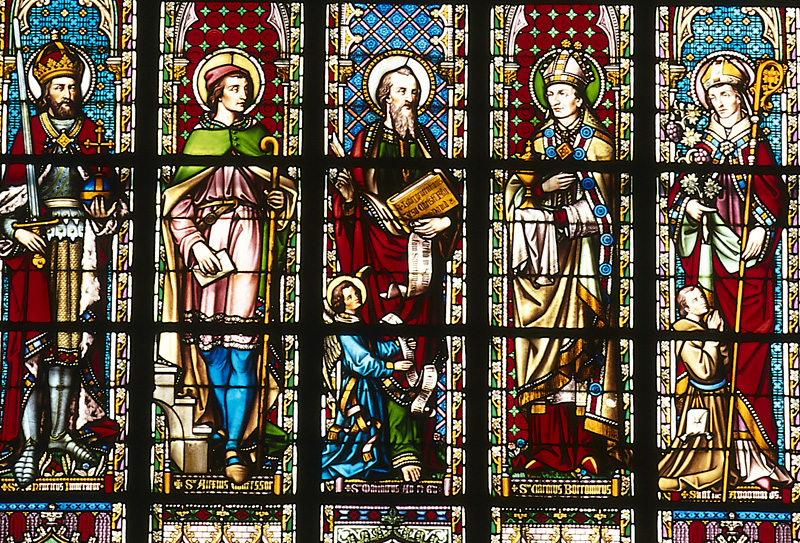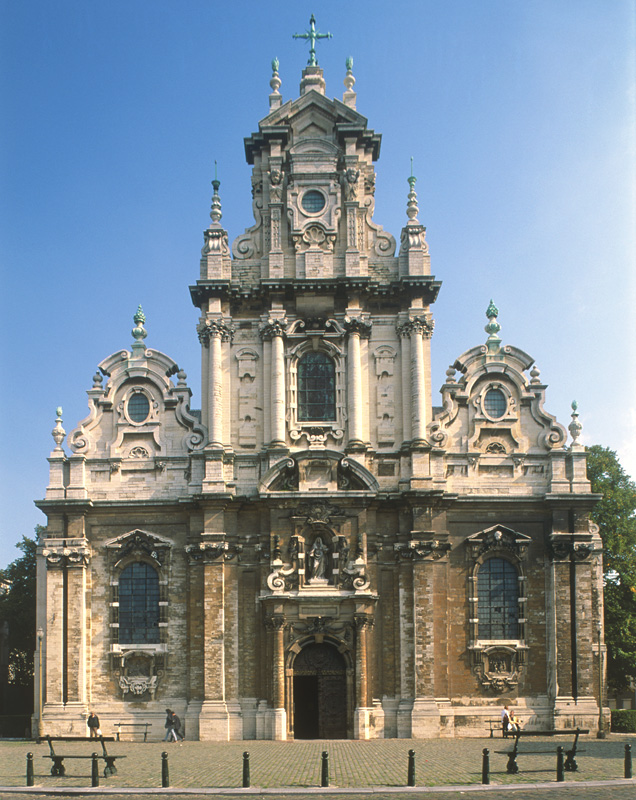 Churches
Churches
 Cathédrale des Saints Michel et Gudule, Brussels
Cathédrale des Saints Michel et Gudule, Brussels
Brussels’ honey-coloured Gothic cathedral is a sanctuary of calm after the bustle of the Grand Place. Used for royal weddings and funerals (For further details see Cathédrale des Saints Michel et Gudule).
 Église Saint-Jacques-sur-Coudenberg, Brussels
Église Saint-Jacques-sur-Coudenberg, Brussels
One of Brussels’ most distinctive churches occupies a prominent position overlooking the Place Royale: its bell-tower apart, it looks more like a Roman temple than a Christian church.
 Église Notre-Dame du Sablon, Brussels
Église Notre-Dame du Sablon, Brussels

Église Notre-Dame du Sablon, Brussels
The 15th-century church of the Guild of Crossbowmen is a beautiful example of Brabantine Gothic style, lit by large expanses of stained glass (For further details see Sablon).
 Église Saint-Jean-Baptiste au Béguinage, Brussels
Église Saint-Jean-Baptiste au Béguinage, Brussels

Église Saint-Jean-Baptiste-au-Béguinage
The exuberant Flemish Baroque façade of this church contrasts with its history as the focal point of a béguine community of women. Something of their charity and moderation still pervades the interior (For further details see Église St-Jean-Baptiste au Béguinage).
 Onze-Lieve-Vrouwekerk, Bruges
Onze-Lieve-Vrouwekerk, Bruges
Bruges’ most striking church, with a rocket-like spire in the austere style of Scheldt Gothic. The interior has been tinkered with ceaselessly since the 13th century. Its outstanding treasure is Michelangelo’s Madonna and Child, donated by a wealthy merchant in 1514 (For further details see Onze-Lieve-Vrouwekerk).
 Sint-Salvatorskathedraal, Bruges
Sint-Salvatorskathedraal, Bruges
Both grand and sombre, the tone of this church befits its status as Bruges’ cathedral. Although mainly Gothic, Saint Saviour’s may date back in origin to early Christian times. The turreted tower was built in Neo-Medieval style in the late 19th century (For further details see Sint-Salvatorskathedraal).
 Sint-Baafskathedraal, Ghent
Sint-Baafskathedraal, Ghent
Its soaring Gothic interior and Baroque choir give Ghent’s impressive cathedral a forceful quality (For further details see Sint-Baafskathedraal). It is upstaged, however, by its greatest treasure: Jan and Hubrecht van Eyck’s magnificent Adoration of the Mystic Lamb.
 Sint-Niklaaskerk, Ghent
Sint-Niklaaskerk, Ghent
The interior of Ghent’s most attractive and imposing church has been scrubbed clean by a programme of restoration, resulting in a light and joyous space that makes the most of the robust Gothic stonework (For further details see Sint-Niklaaskerk).
 Onze-Lieve-Vrouwekathedraal, Antwerp
Onze-Lieve-Vrouwekathedraal, Antwerp
With only one of its two towers finished, Antwerp’s cathedral bears the battle scars of its centuries-long struggle for completion, but the immense interior gives a clear indication of the scale of its creators’ ambitions. It also provides an apt setting for two stunning triptychs by Rubens, as well as some ravishing late-19th-century paintings (For further details see Antwerp Cathedral).
 Sint-Jacobskerk, Antwerp
Sint-Jacobskerk, Antwerp
The richly ornate interior of this church bears testimony to the fact that it was frequented by the well-to-do during Antwerp’s 17th-century heyday – among them, Rubens, who was buried in his family chapel here (For further details see Sint-Jacobskerk).
